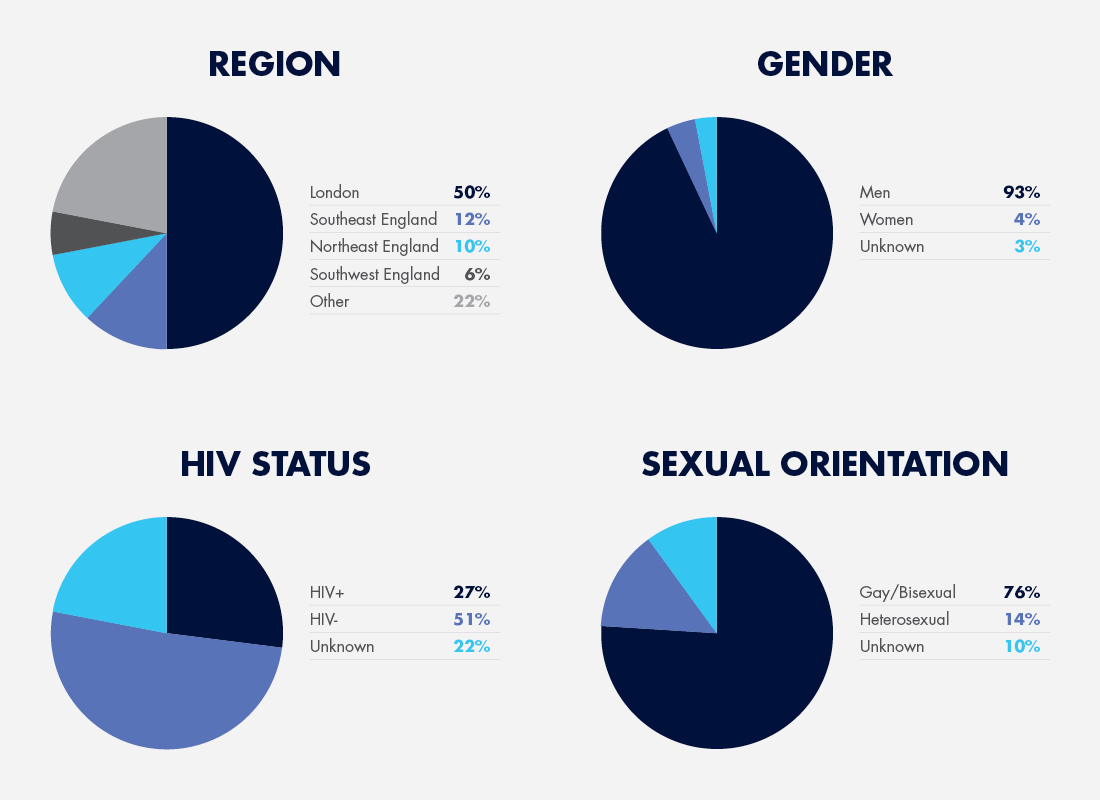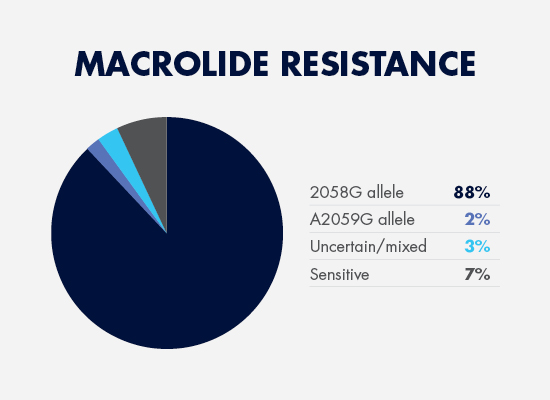Profiling Pathogens for Public Health
Genomic epidemiology can provide insights into pathogen transmission and evolution—and facilitate better countermeasures against infectious disease.

Our expanding knowledge of genomics is driving new approaches to disease prevention, diagnosis, and treatment across every field of medicine. But it’s not just human genes that are informative; examining the molecular profiles of pathogens can yield a better understanding of how those pathogens transmit through populations, who may be at increased risk of infection, and what treatments may work best against a growing background of antimicrobial resistance. Genomic epidemiology saw prominent use at the height of the COVID-19 pandemic, when it allowed healthcare authorities to rapidly identify new strains and develop preventive measures against them—but genomic analysis is a powerful tool against a wide range of public health threats. Two recent studies showcase the potential of genomic epidemiology to combat challenging bacterial pathogens.
Halting healthcare-associated infections
In recent years, Clostridioides difficile has become not only the most common cause of healthcare-associated diarrhea, but potentially the most common cause of nosocomial infections overall.1 Classified as an “urgent threat” in the Centers for Disease Control and Prevention (CDC)’s most recent Antibiotic Resistance Threats report,2 this pathogen is estimated to cause nearly 30,000 deaths3 and approximately $1 billion in healthcare costs each year. However, infection prevention poses a challenge because many carriers of C. difficile don’t exhibit symptoms,4 meaning that they may not be subject to the same infectious disease control precautions in healthcare environments as symptomatic patients.
To determine how significant a role asymptomatic C. difficile carriers play in disease transmission, researchers from the University of Michigan and Rush University Medical Center collaborated on a nine-month-long genomic epidemiology study of patients in a single intensive care unit.5 A total of 1,111 patients were screened for C. difficile at admission and daily during their stays via rectal swab and stool sample. Of the resulting 448 C. difficile isolates obtained, 425 underwent whole genome sequencing to identify toxigenic strains, trace outbreak lineages, and even determine the potential protective effects of asymptomatic infection. The prevalence of toxigenic C. difficile was 9.3 percent over the course of the study, with at least one patient testing positive every day. Unfortunately, colonization with non-toxigenic C. difficile showed no protective effects against toxigenic infection; rather, the rate of symptomatic infection was almost three times higher in carriers of a non-toxigenic strain, suggesting that colonization indicates a permissive gut environment for C. difficile.
Importantly, however, the researchers concluded that cross-transmission is not the most important route to C. difficile infection in healthcare settings. Genomic data indicate that, given the apparent success of current infection prevention practices in intensive care in limiting such transmission, patients are more likely to experience the onset of symptoms from an imported infection than to acquire a new infection in healthcare facilities. As a result, screening all patients for C. difficile on admission may allow the identification of asymptomatic carriers and the implementation of strategies to prevent conversion to symptomatic infection.
Seeking out syphilis
Once nearly eradicated, cases of syphilis are on the rise—particularly in high-income countries.6 To better understand patterns and drivers of transmission, a group of researchers from across England collected whole genome sequences of the causative bacterium, Treponema pallidum, from patient samples submitted between 2012 and 2018.7 Where possible, the samples were linked to information on patient gender, sexual orientation, region, and HIV status (see Figure 1).

From this, the researchers were able to establish a whole genome phylogeny comprising eight of the 17 global T. pallidum sublineages.8 The most common, sublineage 1, was distributed across the study population as expected based on the overall syphilis population; sublineage 14, however, clustered in gay, bisexual, and other men who have sex with men (GBMSM)—with over 93 percent of patients confirmed as members of the GBMSM population. Phylogenomic analysis separated the samples into several clusters, including two in the GBMSM population and one likely representing a localized outbreak among heterosexual people in the northeast of England.
Genomics can also help determine appropriate treatment regimens as antimicrobial resistance grows. Samples in the study were examined for known alleles of macrolide resistance.9 Point mutations in the 23S ribosomal RNA gene can confer this resistance—and over 90 percent of the study samples exhibited macrolide resistance via the A2058G (88 percent) or A2059G (2 percent) alleles (see Figure 2).

Although limited by T. pallidum’s slow mutation rate, this ability to identify and characterize distinct clusters via genomics could support better health education and preventive care for at-risk individuals—and potentially lead to earlier diagnosis and appropriate antibiotic treatment for those involved in an outbreak.
Protecting the population
Disease-causing organisms are constantly evolving and protective measures must keep pace. It’s clear that, as molecular tools and technologies improve, genomic analysis—and the labs that perform it—will play an important role in epidemiology and public health. For laboratory medicine professionals seeking more information on pathogen sequencing, the FDA maintains a database of microbial reference genomes,10 which can be searched via a user-friendly interface and welcomes submissions of high-quality pathogen sequence data.
With a greater understanding of how pathogens move through a population and acquire survival benefits such as treatment resistance, healthcare authorities can implement more precise tracking and outbreak monitoring, provide education and interventions to high-risk groups, and practice better antimicrobial stewardship to reduce future threats.
References:
- Magill SS et al. Multistate point-prevalence survey of health care-associated infections. N Engl J Med. 2014;370(13):1198–1208. doi:10.1056/NEJMoa1306801.
- Centers for Disease Control and Prevention. Antibiotic Resistance Threats in the United States 2019. December 2019. https://www.cdc.gov/drugresistance/pdf/threats-report/2019-ar-threats-report-508.pdf.
- Centers for Disease Control and Prevention. Clostridioides difficile. https://www.cdc.gov/cdiff/pdf/Cdiff-Factsheet-P.pdf.
- Furuya-Kanamori L et al. Asymptomatic Clostridium difficile colonization: epidemiology and clinical implications. BMC Infect Dis. 2015;15:516. doi:10.1186/s12879-015-1258-4.
- Miles-Jay A et al. Longitudinal genomic surveillance of carriage and transmission of Clostridioides difficile in an intensive care unit. Nat Med. 2023;29(10):2526–2534. doi:10.1038/s41591-023-02549-4.
- Tao Y-T et al. Global, regional, and national trends of syphilis from 1990 to 2019: the 2019 global burden of disease study. BMC Public Health. 2023;23(1):754. doi:10.1186/s12889-023-15510-4.
- Beale MA et al. Genomic epidemiology of syphilis in England: a population-based study. Lancet Microbe. 2023;4(10):e770–e780. doi:10.1016/S2666-5247(23)00154-4.
- Beale MA et al. Global phylogeny of Treponema pallidum lineages reveals recent expansion and spread of contemporary syphilis. Nat Microbiol. 2021;6(12):1549–1560. doi:10.1038/s41564-021-01000-z.
- Beale MA et al. Genomic epidemiology of syphilis reveals independent emergence of macrolide resistance across multiple circulating lineages. Nat Commun. 2019;10(1):3255. doi:10.1038/s41467-019-11216-7.
- Sichtig H et al. FDA-ARGOS is a database with public quality-controlled reference genomes for diagnostic use and regulatory science. Nat Commun. 2019;10(1):3313. doi:10.1038/s41467-019-11306-6.
Subscribe to Clinical Diagnostics Insider to view
Start a Free Trial for immediate access to this article